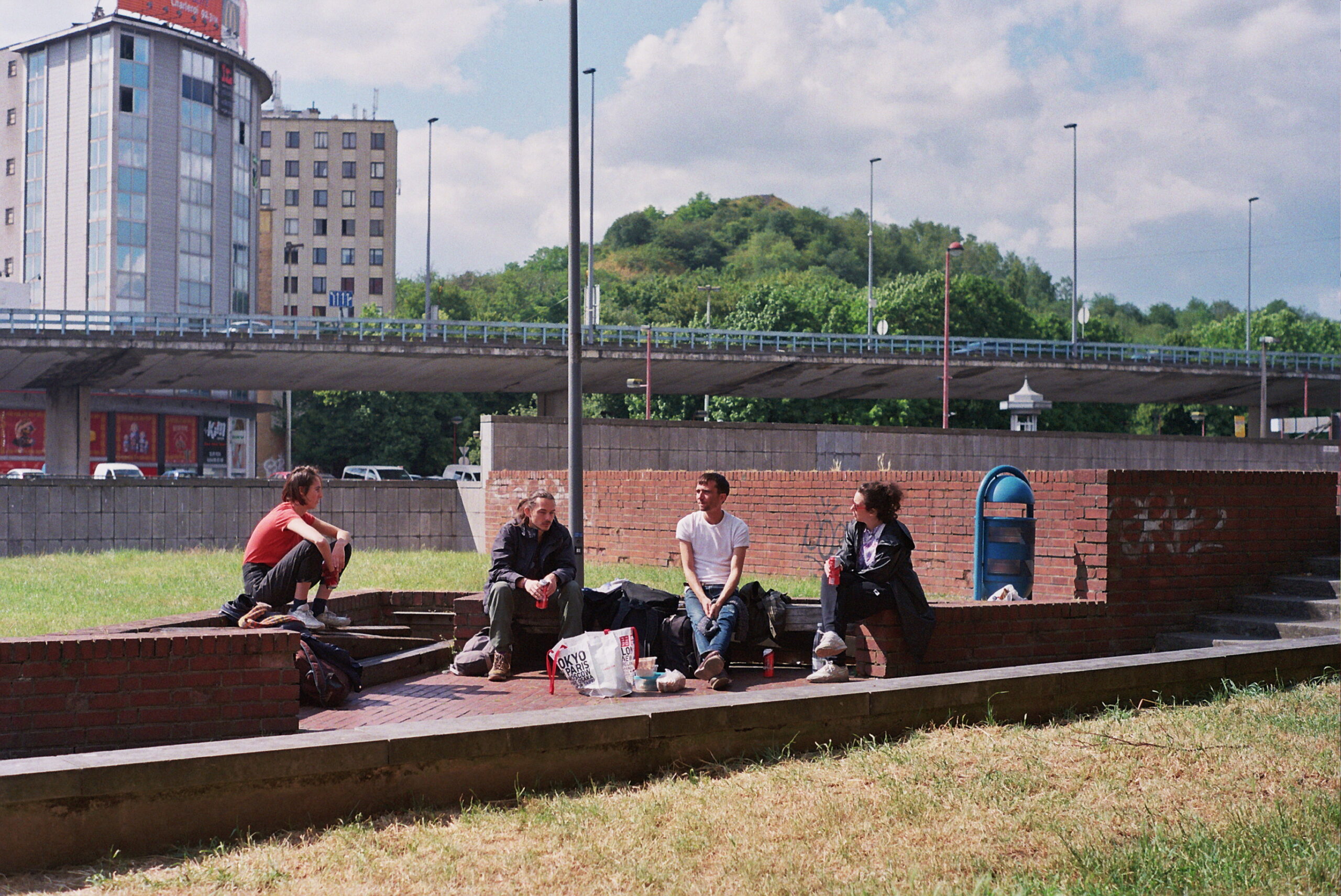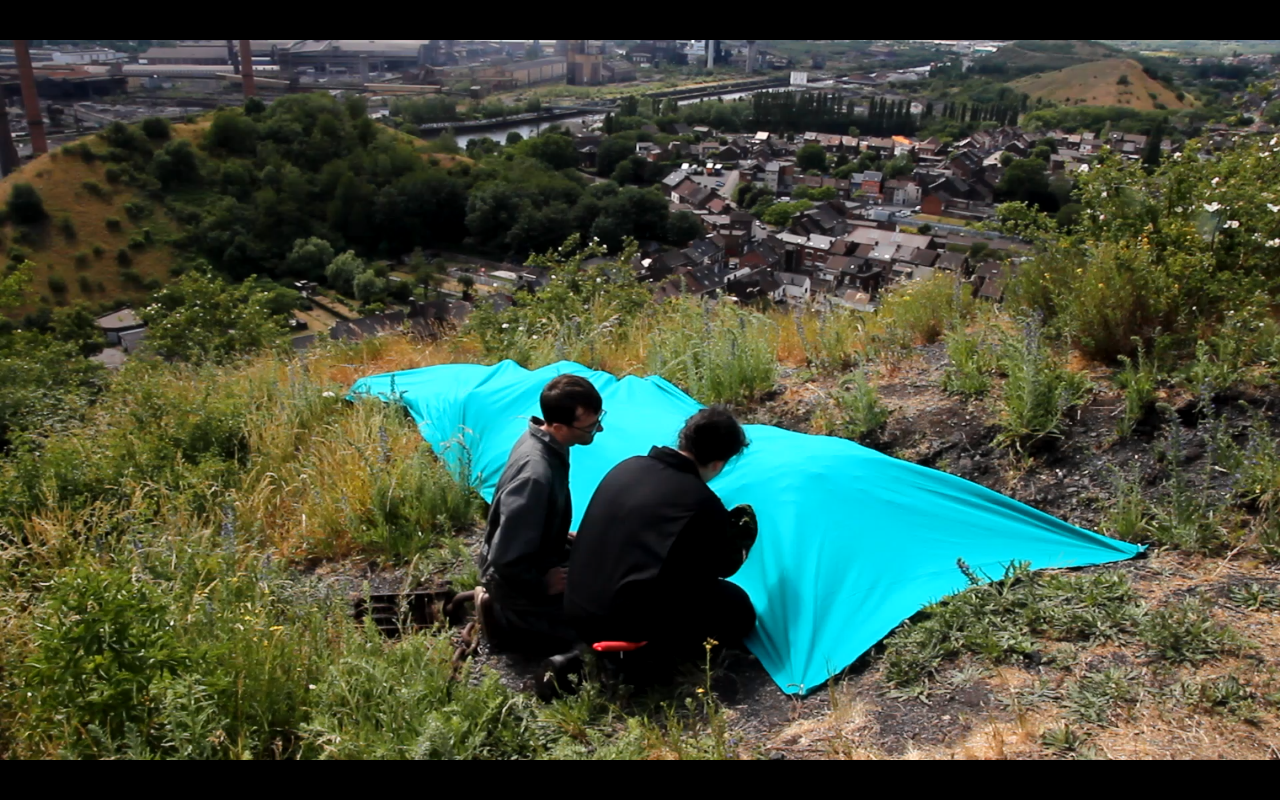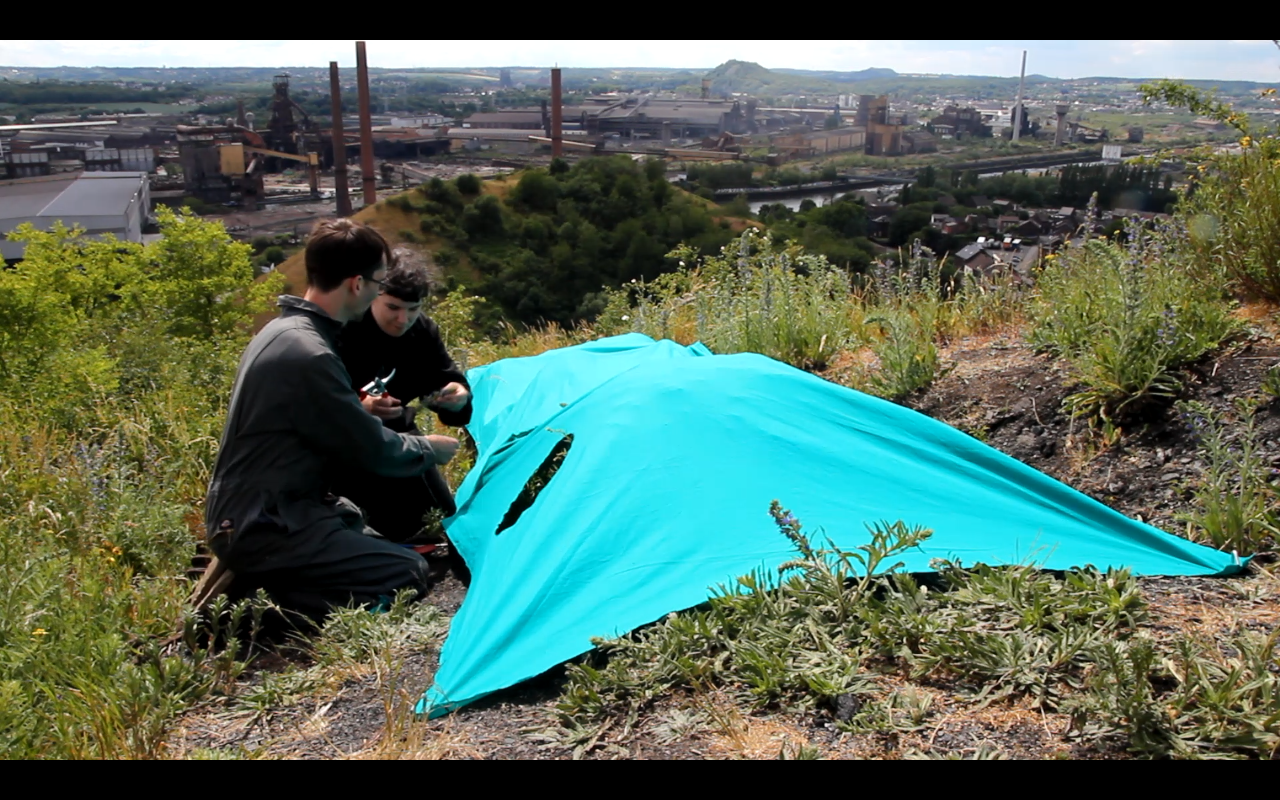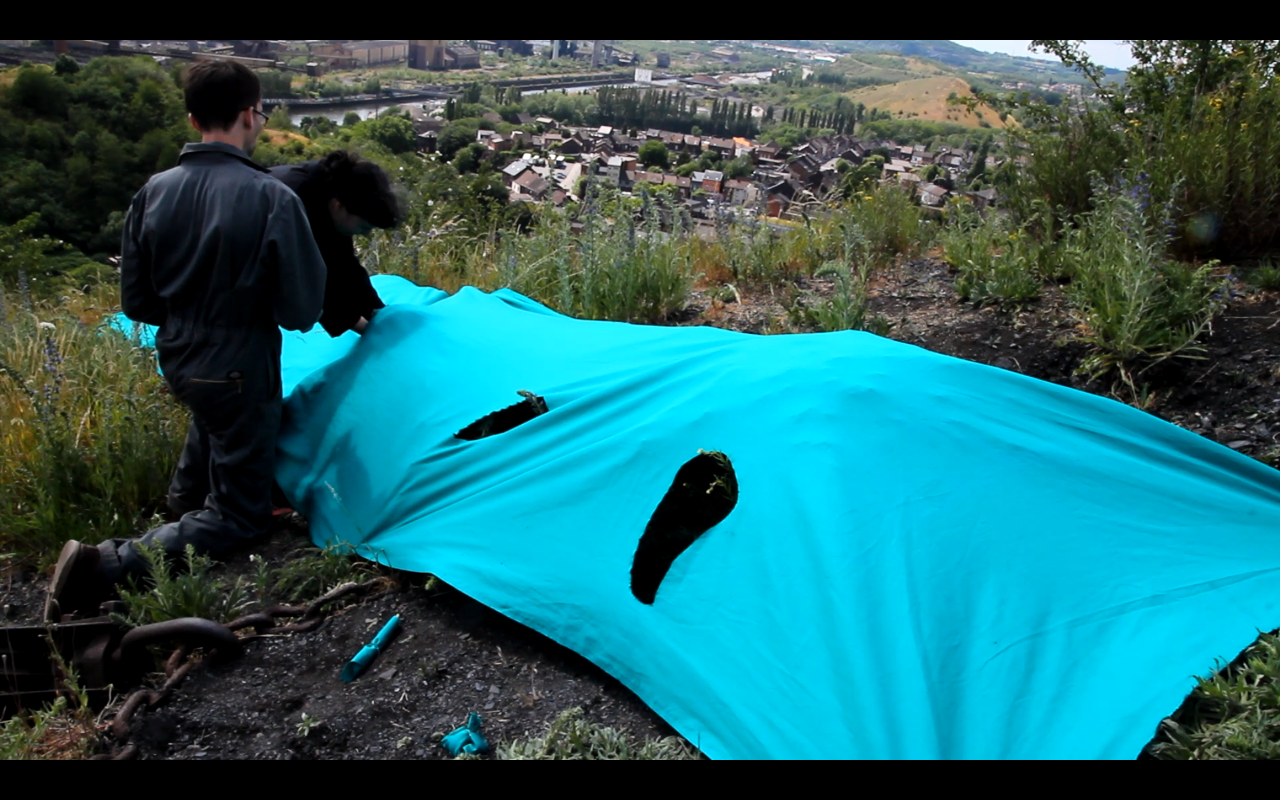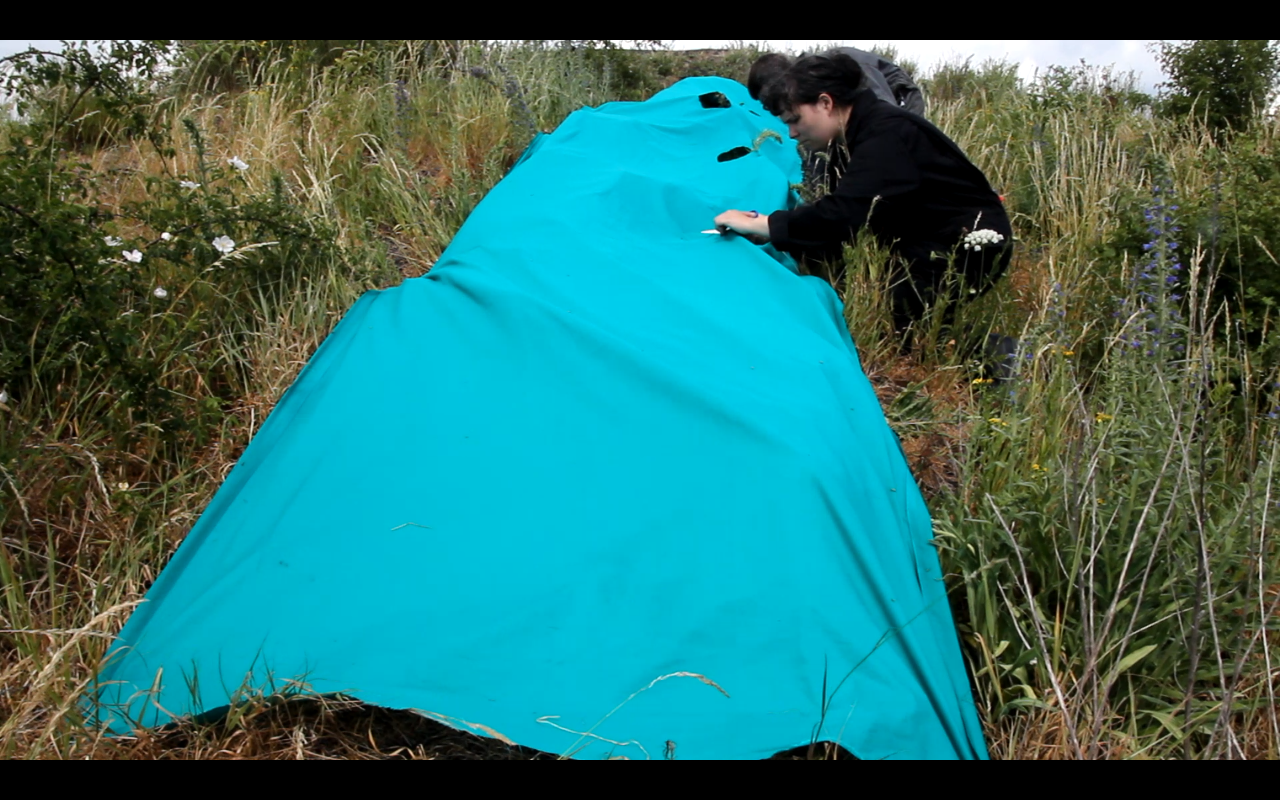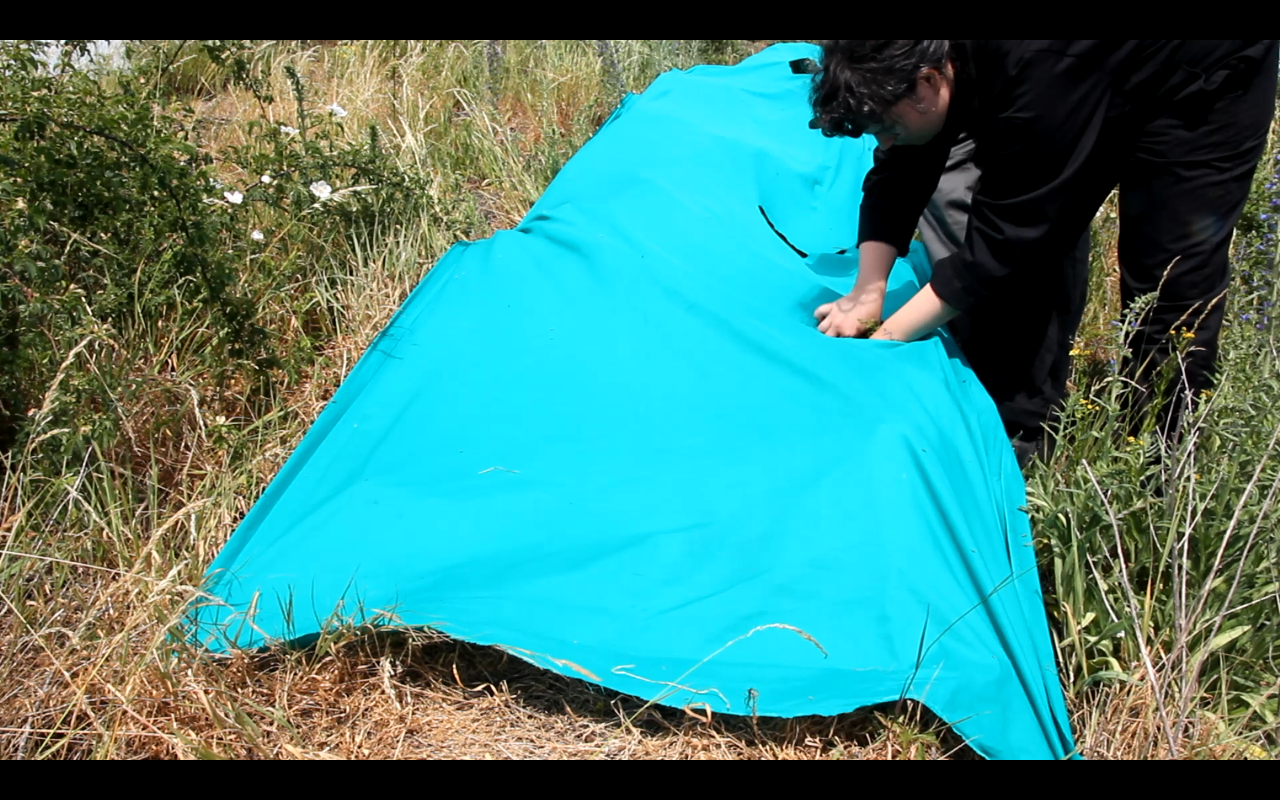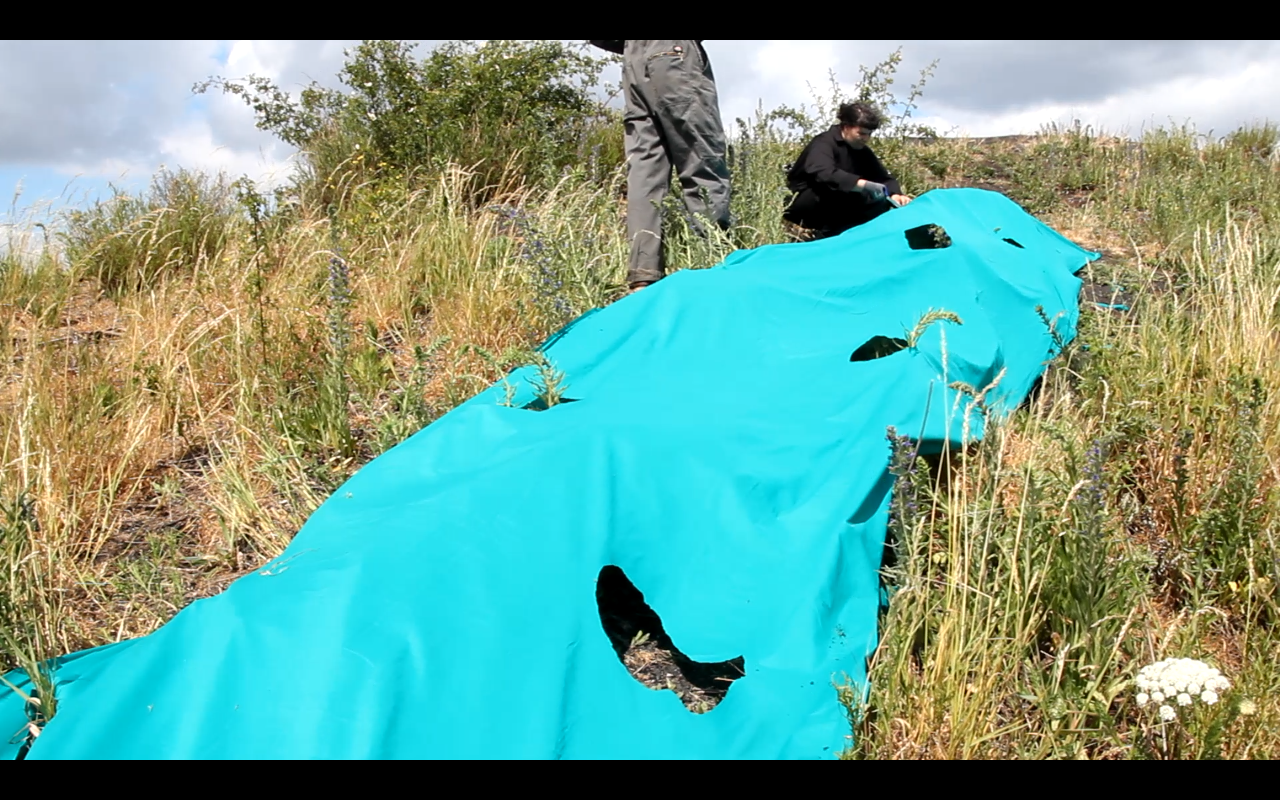Champ opératoire
Surgical Site is a performance from a giant biopsy on a slag heap from Charleroi.
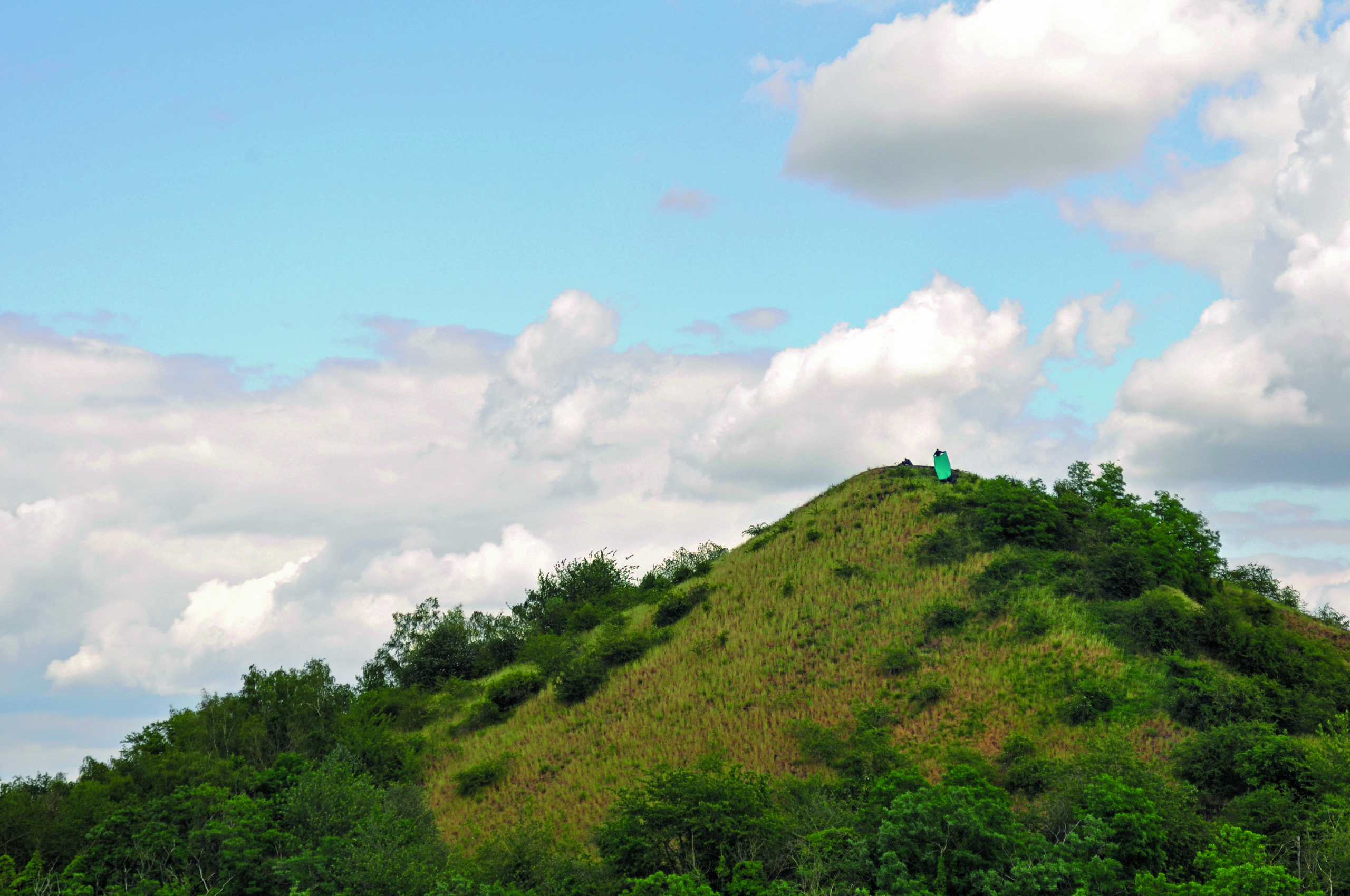
I created this performance with the idea of learning about a specific landscape but also to take care of my environment and to create a dialogue between an artist (me) and the inhabitants (living or not) of the Slag Heap of Piges. It involves taking a giant biopsy of the slag heap in a specific area, the summit, where different types of plants and some industrial relics are found. This method allows me to reveal certain details of this landscape and to suggest a zoom-in/zoom-out idea on the body of the slag heap. My goal here is to create a biodiversity database from the post-industrial landscape.
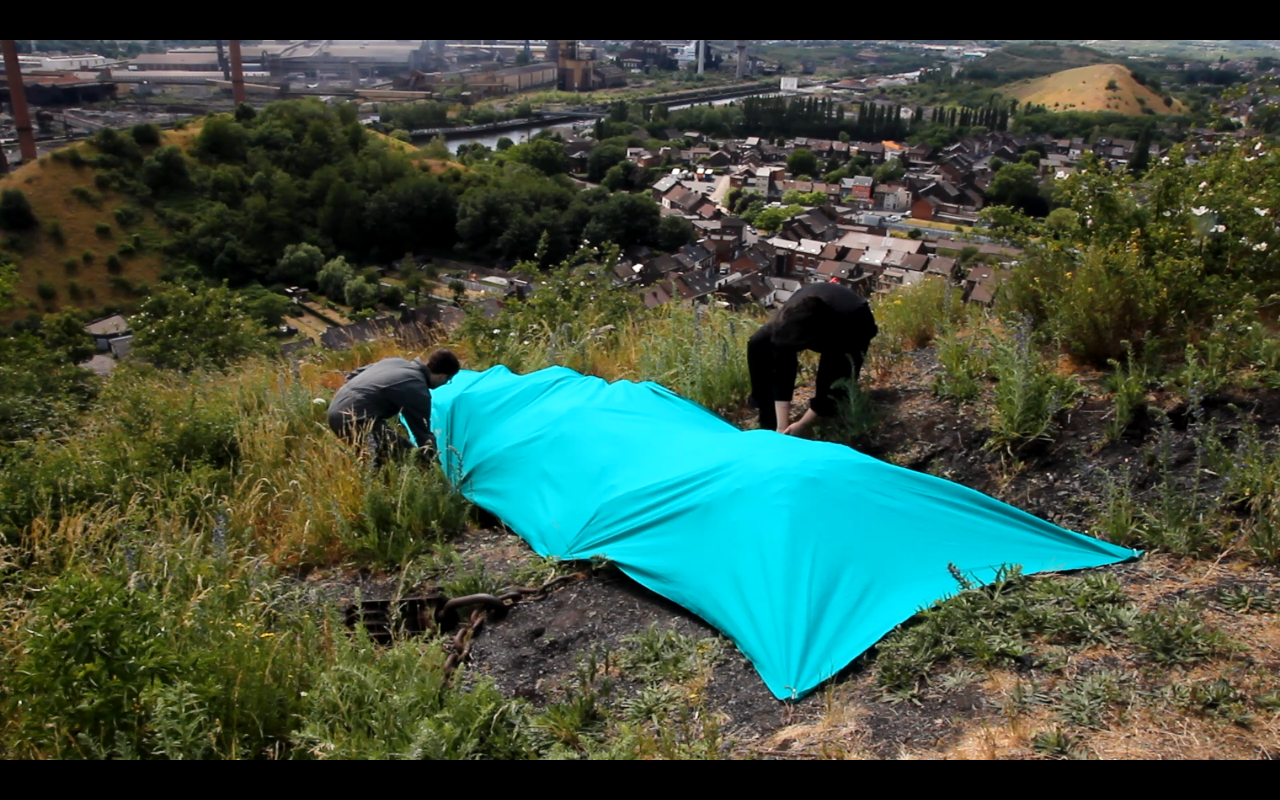
Duration: 20 minutes, accessories: 1.5m x 8m surgical drape, gloves, garden shears, and a sampling scoop.
Performers: Stéfan Tulépo and Marion Henry, June 7, 2020, Slag Heap of Piges, Charleroi.

Setting up the surgical field
Surgical field installed.
We will now take the first sample.
30 cm x 15 cm cut.
We see humus, black soil, and yellow flowers.
We take a sample from a plant covered with a light white down.
The second sample is taken from the left side of the surgical field.
25 cm diameter incision.
A section of a clustered plant with purple flowers and a pale green stem.
We take the third sample.
In the middle of the surgical field.
Smaller incision, 15 cm x 20 cm.
We observe the same flowers on the surface as in the second sample.
We take a sample from a small dried yellow daisy-type flower that has lost its petals.
Fourth sample.
We are in the middle of the sampling area.
Small incision on the left side.
We sample a budding plant with a few small aphids.
We observe a very unusual spider, never before seen; it has a white ball under its abdomen, unlike the normal one where the white ball is on top.
Fifth sample, lower part.
Larger incision. Here, the soil has fewer grasses.
So we take a few dried branches.
We observe numerous small grasshoppers that are attracted to the fabric of the surgical site and stagnate on it.
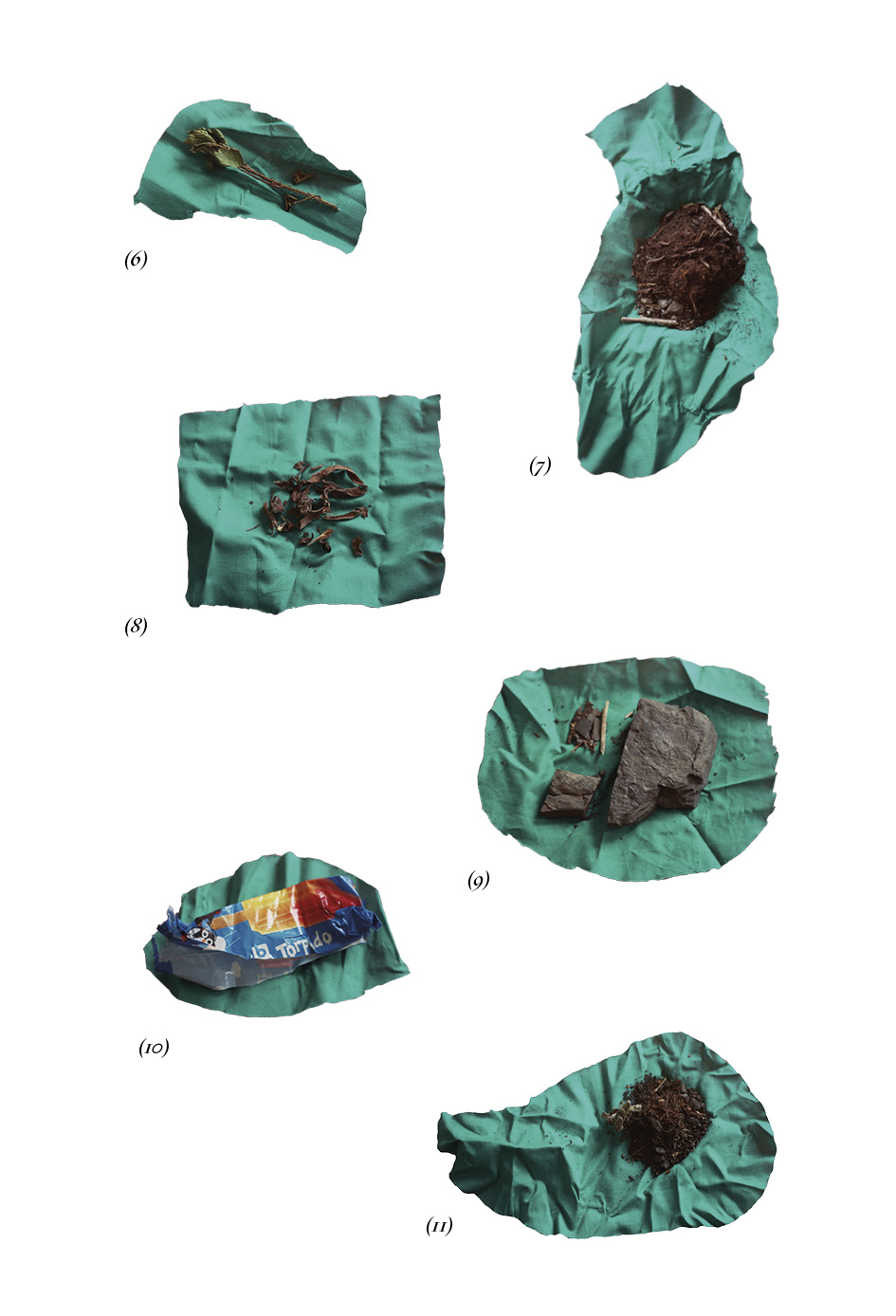
Sixth sample.
Small incision.
We observe very dry, orange grass, very little other vegetation.
We take a thorny plant similar to a bramble or rosebush.
We switch sides to take samples from the other side of the surgical site.
The small grasshoppers are increasingly numerous on the fabric and increasingly larger.
Seventh sample.
Large incision.
We observe pale green grasses with a rather orange base, emerging from the incision.
With the help of the small shovel, we take a soil sample.
Eighth sample.
A 25 cm by 25 cm incision.
We find the same plants with purple clusters, as well as perennials.
We collect seeds, like bean seeds, with their hulls and hairs.
We find the spider from earlier. Extraordinary.
Ninth sample.
We stay in the area of purple plants, but we observe larger stones of charcoal residue.
Two pieces of charcoal with traces of a spider’s nest underneath.
Tenth sample.
A Boni brand “Torpedo” ice pack.
Eleventh and final sample.
A plant that looks like a small cushion with yellow flowers, as well as a few small buds.
We remove the plant and its roots.
We now observe a wide variety of insects on the fabric of the surgical field.
We will now fold the surgical field, trying not to damage the insects. We observe a great deal of heat coming from the ground.
The surgical field is folded and the biopsy is complete.
